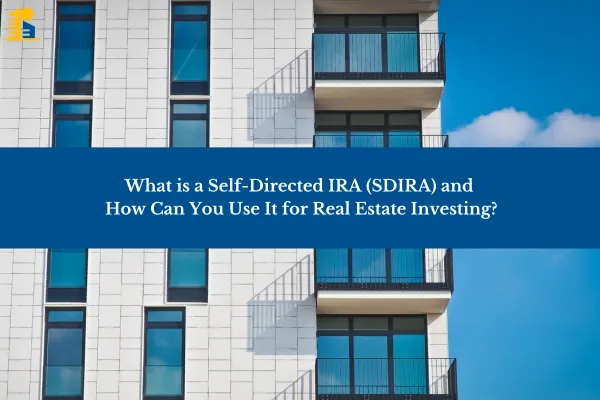
What is a Self-Directed IRA (SDIRA) and How Can You Use It for Real Estate Investing?
When it comes to building long-term wealth, most people think of stocks, bonds, and mutual funds in their retirement accounts. But what if you could invest in real estate—all while enjoying tax advantages?
That’s where a Self-Directed IRA (SDIRA) comes in.
In this post, we’ll break down:
✅ What a Self-Directed IRA is
✅ How it differs from traditional IRAs
✅ How you can use it for real estate investing
✅ Key benefits and potential risks
What is a Self-Directed IRA (SDIRA)?
A Self-Directed IRA is a tax-advantaged retirement account that allows investors to go beyond traditional assets (like stocks and bonds) and invest in alternative assets, including:
✔️ Real estate
✔️ Private equity
✔️ Precious metals
✔️ Cryptocurrency
✔️ Promissory notes
Unlike standard IRAs offered by big-name financial institutions, SDIRAs require a custodian that allows alternative investments. This means you have full control over your investment choices.
How is an SDIRA Different from a Traditional IRA?

With an SDIRA, you’re in the driver’s seat—deciding exactly where and how your retirement funds grow.
How Can You Use an SDIRA for Real Estate Investing?
Real estate is one of the most powerful ways to grow wealth over time, and an SDIRA allows you to invest in properties with tax advantages. Here’s how:
✅ Invest in Commercial Real Estate – Medical office buildings, retail centers, and hospitality properties can generate long-term income.
✅ Participate in Real Estate Syndications – Pool funds with other investors to acquire larger properties.
✅ Buy and Hold Rental Properties – Earn tax-deferred or tax-free rental income in your IRA.
✅ Fix and Flip – Purchase, renovate, and sell properties while keeping profits within the SDIRA.
✅ Purchase Land – Hold land for appreciation or development.
Example:
A doctor with $250,000 in parked capital rolls over funds into an SDIRA and invests in a medical office building. Over time, the rental income grows tax-deferred, and the property appreciates, increasing the total value of their retirement account.
Key Benefits of Investing in Real Estate with an SDIRA
✔️ Tax Advantages – Profits grow tax-deferred (Traditional SDIRA) or tax-free (Roth SDIRA).
✔️ Portfolio Diversification – Reduce reliance on stock market volatility.
✔️ Leverage – Some SDIRAs allow non-recourse loans to finance real estate purchases.
✔️ Long-Term Stability – Real estate offers steady income and appreciation over time.
Important Rules & Risks to Keep in Mind
🔹 Prohibited Transactions – You can’t use an SDIRA to buy property for personal use (e.g., a vacation home). It must be for investment only.
🔹 Disqualified Persons – You can’t rent or sell the property to yourself, your spouse, or direct family members.
🔹 Custodian Fees – SDIRA custodians charge fees for account administration.
🔹 Liquidity Concerns – Unlike stocks, real estate isn’t quickly liquidated, so plan accordingly.
Is an SDIRA Right for You?
If you’re a doctor, business owner, or high-income professional looking to diversify your retirement portfolio beyond stocks and bonds, an SDIRA could be a powerful tool—especially if you’re interested in real estate investing.
Before getting started, consult with an SDIRA custodian and a real estate investment professional to ensure compliance and maximize benefits.
Want to learn more? Drop a comment or reach out to see how we can help you invest in high-performing real estate assets through an SDIRA!

